#internetofthings
Explore tagged Tumblr posts
Text
Build an IoT project, the easy way! 🔌💡🌐
WipperSnapper is a firmware designed to turn any WiFi-capable board into an Internet-of-Things device without programming a single line of code.
#adafruit#iot#wippersnapper#internetofthings#firmware#wifi#nocode#lowcode#diy#smartdevices#easypeasy#wireless#techinnovation#plugandplay#projectguide#hasslefree#makeiteasy#iotmagic
16 notes
·
View notes
Text

AR or Augmented Reality and VR or Virtual Reality are the technical inventions that help live our imaginations before our eyes through simulations. AR/VR can be programmed with IoT objects to offer optimal audio-visual experiences that can rival or replicate a physical world without the help of any tangible media.
But, how to program these elements?
The popular programming languages help you build the simulations that bring AR/VR tech to life for the audience. Languages like C#, Python, JavaScript, JAVA, Swift, C++, Rust, and APIs like WebGL allow developers to build the right AR/VR for the users.
Are you willing to build AR/VR tech for your business? Hire Augmented Reality Developers or Virtual Reality Developers via Remote72.
#ar vr technology#augmented reality#virtual reality#app development#developer#programming#software engineering#software#ar vr development services#python#java#javascript#webgl#developers#iot#iot tech#internetofthings#technology#tech
2 notes
·
View notes
Text

The cloud is black
#pictureoftheday#allovertheworld#picoftheday#photooftheday#bestoftheday#the#that#cloud#photooftheweek#is#skyworld#boomerangoftheday#boomerangoftheweek#throughthelens#internetofthings#whatsupstartup#naturalsky#traveltheworld#instagoodmyphoto#myworld#skyvideo#only#ilikeit#asthetic#thebestnewarchitects#thing#a#youcandoit#alllivesmatter#itstimetocelebrate
3 notes
·
View notes
Text

Our smart touch switches redefine luxury with their sleek toughened glass design, seamlessly blending style and innovation.
Wait there is more! You can also control them with ease through the Smarden app for the ultimate comfort at your fingertips.
We are the best home automation company,
contact us for home automation in delhi, mumbai, chandigarh and chennai: +91 85698 06458
or Visit: www.smarden.in
#smart home automation#technology#smart home#home automation#home automation in delhi#home automation system#best home automation company in delhi#touch switches#smart touch switches#wifi touch switches#iot#internetofthings#interiordecor#realestate
2 notes
·
View notes
Text
#smartcities#smartcity#smartcitiesinindia#innovation#technology#rera#indianrealestate#hom#artificialintelligence#city#smart#internetofthings
2 notes
·
View notes
Text
Custom IOT Industrial Model Built to Client Specifications | IOT Project & Model Development
We created a custom IOT working model based on the specific requirements of our client. The model's size is 1016mm x 766mm x 283mm, built to perfectly match their needs. This project was done for a client located in Saudi Arabia and Dubai.
🎥 Watch the full video for a closer look at the model and its intricate details!
If you want to bring your project or idea to life, we can help! Contact us today to get started. Don��t forget to like, comment, and share if you enjoyed the video!
Connect With Us: Contact: +919664883746 Email: [email protected] Website : maadhucreatives.com
#iotindustrialdesign#iotengineering#modelmakers#techprojects#smartdevices#internetofthings#custommodels#techsolutions#industrialdesign#digitalmodels#innovationintech#industrial
1 note
·
View note
Text
Where maps meet technological advancements—explore how GIS and IoT weave a living tapestry of smart cities, sensing change, guiding growth, and echoing the rhythm of a smarter tomorrow.
#digitaltwins#environmentalmonitoring#geospatialinnovation#geospatialtechnology#gis#gisiotintegration#internetofthings#locationintelligence#realtimegis#smartmaps#spatialanalytics
0 notes
Text
What are high-paying IoT job roles?
The Internet of Things (IoT) is one of the fastest-growing technological fields, creating numerous high-paying job opportunities. With businesses leveraging IoT for automation, smart devices, and data-driven decision-making, skilled professionals are in high demand.
Top High-Paying IoT Job Roles
IoT Solutions Architect – This role involves designing and implementing end-to-end IoT solutions. It requires expertise in cloud computing, networking, and security. IoT architects can earn between $120,000 to $160,000 annually.
IoT Security Specialist – Cybersecurity is a crucial concern in IoT networks. These specialists focus on protecting IoT devices and data from cyber threats, with salaries ranging from $110,000 to $150,000.
IoT Software Developer – Developers build applications for IoT devices, integrating hardware and software for seamless communication. Their salaries typically range between $90,000 and $140,000.
IoT Cloud Engineer – IoT devices generate vast amounts of data, requiring cloud-based solutions for storage and processing. IoT cloud engineers work with platforms like AWS, Azure, and Google Cloud, earning $100,000 to $145,000 per year.
IoT Data Scientist – Data scientists analyze IoT-generated data to derive insights for businesses. Strong skills in machine learning, AI, and big data tools can lead to salaries exceeding $120,000.
Embedded Systems Engineer – IoT devices rely on embedded systems for functionality. Engineers skilled in C, C++, and RTOS can earn between $85,000 and $130,000.
IoT Product Manager – They oversee the development of IoT products, bridging the gap between technical and business teams. Their salaries range from $110,000 to $150,000.
To enter this high-paying field, professionals can enhance their skills by enrolling in an Internet of Things Course.
#iot#internetofthings#iotsolutions#iot applications#iotmanagement#iot platform#technologynews#techinnovation#automation#digitaltransformation#embeddedsystems
0 notes
Text
An Open Letter to the Future: Building a Better Digital World
Dear Future Digital Users,
It is evident by considering the digital path of the previous ten years that technology is changing quicker than ever. Along with this change comes a responsibility: we must make sure the digital world we build is sustainable, inclusive, and moral. I have developed a better awareness of the possibilities and difficulties defining our digital age over the last ten weeks; today, I see a future moulded by purpose and creativity.
Our lives might be changed by emerging technologies like blockchain, 5G, and the Internet of Things (IoT). More than just cryptocurrencies, blockchain provides ethical supply chains, decentralized identity management, and safe, open voting systems. These fixes may help us fight dishonesty and build institutional trust.
The introduction of 5G provides the infrastructure to enable real-time innovation. From remote surgery to immersive virtual schooling, 5G will help reduce the digital divide—a major topic covered in our course. But accessibility needs digital literacy instruction so that everyone may securely and effectively interact with technology.
We have to give cybersecurity first priority as we install IoT devices in cities, households, and hospitals. Our personal data will be flowing continuously, so safeguarding it calls not only for cutting-edge technologies but also for robust laws driven by data ethics. Organizations ought to respect consumer privacy and guarantee openness on data use.
We also discussed the perils of algorithmic bias throughout the course. From employment to financing, as artificial intelligence permeates decision-making, we have to create systems that are equitable, inclusive, and responsible. Technology should empower not discriminate.
At last, cloud computing will remain essential for enabling sustainable, scalable digital infrastructure. Still, we have to make sure it's utilized sensibly, with regard for data sovereignty and environmental effect.
Our digital future is one we will shape. Let us be ethical leaders, critical thinkers, and deliberate innovators. Let's choose technology that uplifts mankind, closes gaps, and solves difficulties. Working together, we can create a digital environment fit for everyone, not just the strong.
Sincere, Ved Patel
#DigitalFuture#EmergingTechnologies#Blockchain#5G#InternetOfThings#Cybersecurity#DataEthics#AlgorithmicBias#DigitalLiteracy#CloudComputing#CourseReflection
0 notes
Text
Revolusi Industri 4.0: Apa yang Harus Kita Siapkan untuk Masa Depan?

Saya masih ingat ketika pertama kali mendengar istilah Revolusi Industri 4.0. Saat itu, saya menganggapnya sebagai sekadar jargon teknologi yang hanya relevan bagi para insinyur atau ahli IT. Namun, semakin saya mendalami, semakin saya menyadari bahwa perubahan ini bukan hanya tentang robot atau kecerdasan buatan—ini tentang kita semua. Baik Kamu seorang mahasiswa, pekerja kantoran, pengusaha, atau bahkan seseorang yang sedang mencari arah baru dalam karir, Revolusi Industri 4.0 mengubah cara kita bekerja, belajar, dan berinteraksi. Jadi, apa yang sebenarnya terjadi, dan bagaimana kita bisa mempersiapkan diri?
Memahami Revolusi Industri 4.0 dan Dampaknya
Revolusi Industri 4.0 bukan sekadar perkembangan teknologi, tetapi perubahan mendasar dalam cara industri dan bisnis beroperasi. Dengan hadirnya otomasi, kecerdasan buatan, big data, dan Internet of Things (IoT), dunia kerja berubah lebih cepat dari yang kita bayangkan. Jika kita tidak menyesuaikan diri, ada kemungkinan kita akan tertinggal. Beberapa perubahan utama yang kita hadapi meliputi: - Otomasi dan robotisasi yang menggantikan pekerjaan manual. - Konektivitas digital yang memungkinkan bisnis berjalan tanpa batas geografis. - Analisis data yang canggih untuk pengambilan keputusan yang lebih tepat. Tapi jangan khawatir, ini bukan hanya tentang ancaman. Justru, Revolusi Industri 4.0 membuka banyak peluang baru bagi mereka yang siap menghadapinya. Keterampilan yang Dibutuhkan di Era Revolusi Industri 4.0 Dalam dunia yang terus berubah ini, mengandalkan keterampilan lama saja tidak cukup. Kita harus terus belajar dan mengembangkan diri agar tetap relevan. Berikut adalah keterampilan utama yang akan sangat berharga di era digital ini: - Keterampilan Teknologi DigitalMenguasai teknologi dasar seperti pengolahan data, cloud computing, dan keamanan siber akan menjadi nilai tambah besar di banyak industri. - Kemampuan Beradaptasi dan Belajar Sepanjang HayatDengan perubahan yang cepat, kemampuan untuk belajar hal baru menjadi aset yang sangat penting. Mereka yang fleksibel akan lebih mudah bertahan dan berkembang. - Kecerdasan Emosional dan Soft SkillsMeski teknologi berkembang, manusia tetap menjadi faktor utama dalam dunia kerja. Kreativitas, kemampuan komunikasi, dan kepemimpinan akan tetap dicari oleh banyak perusahaan. Bagaimana Bisnis Harus Beradaptasi dengan Revolusi Industri 4.0? Bukan hanya individu, tetapi bisnis juga harus berubah agar tetap kompetitif. Perusahaan yang tidak mampu beradaptasi dengan teknologi digital akan kesulitan bersaing di pasar global. - Transformasi Digital sebagai Kunci KeberlanjutanPerusahaan harus mengintegrasikan teknologi digital dalam operasional mereka, baik melalui automasi, big data, maupun AI. - Peningkatan Kualitas SDMBisnis yang sukses adalah yang mempersiapkan tenaga kerja mereka dengan pelatihan berbasis teknologi. - Fokus pada Inovasi dan Pengalaman PelangganDi era ini, pelanggan memiliki ekspektasi tinggi terhadap layanan yang cepat dan personal. Menggunakan teknologi untuk meningkatkan pengalaman pelanggan bisa menjadi pembeda utama dalam persaingan bisnis.
Kesimpulan: Apakah Kita Siap untuk Revolusi Industri 4.0?
bukan lagi masa depan—ia sudah terjadi sekarang. Jika kita ingin tetap relevan dan berkembang, kita harus beradaptasi dengan teknologi dan terus belajar. Jangan sampai kita hanya menjadi penonton dalam perubahan besar ini. Jika Kamu ingin meningkatkan keterampilan dan mempersiapkan diri untuk era digital ini, pertimbangkan untuk mengikuti kursus online, webinar, atau pelatihan berbasis teknologi yang dapat membantu Kamu tetap unggul di dunia kerja yang kompetitif ini. Mulai sekarang, dan buat masa depanmu lebih cerah! 🚀 Read the full article
#AI#bigdata#eradigital#industrimodern#inovasibisnis#InternetofThings#kecerdasanbuatan#keterampilandigital#otomasi#pekerjaanmasadepan#perkembanganteknologi#RevolusiIndustri4.0#softskills#teknologimasadepan#transformasidigital
0 notes
Text
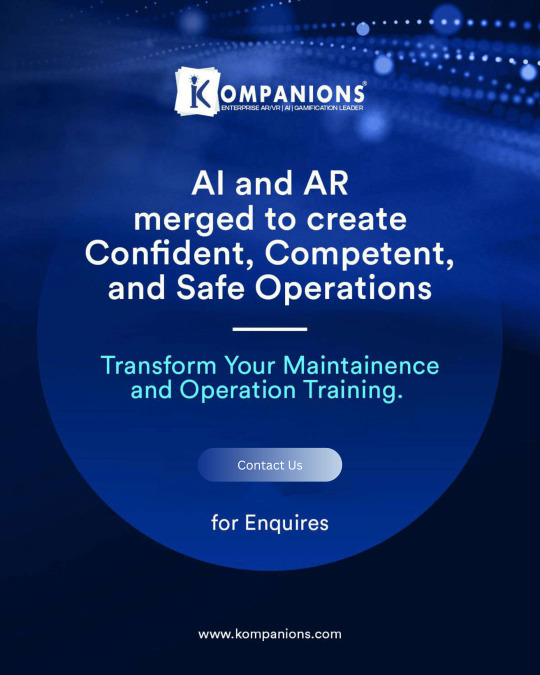
IoT in Manufacturing: Use Cases, Benefits and Examples
If there is any one industry that has been under relatively high pressure to adapt and evolve, that would have to be the manufacturing industry. Various businesses and companies are involved in this sector, leading to the production of different types and levels of products and goods.
1 note
·
View note
Text
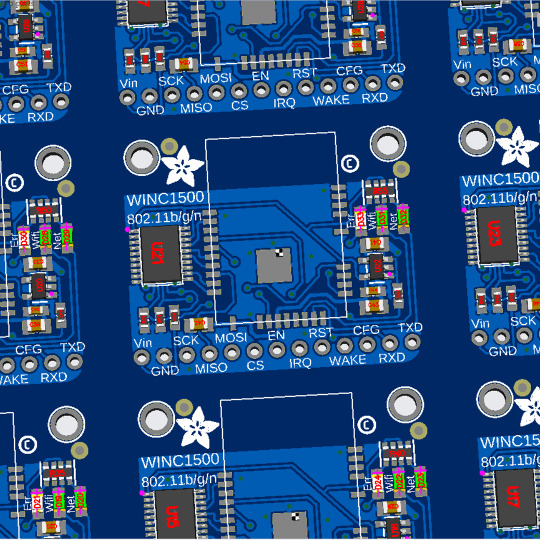
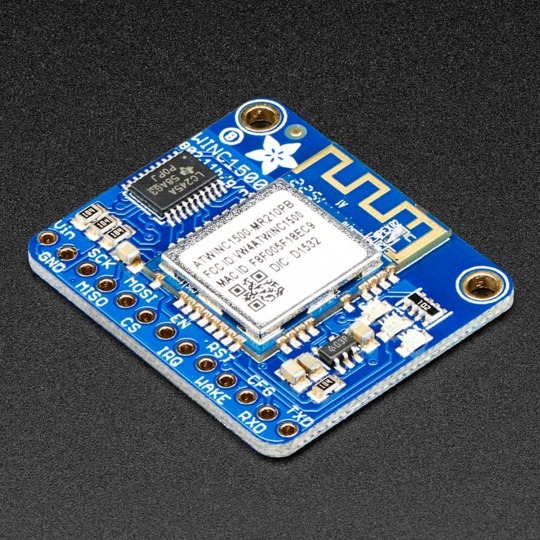
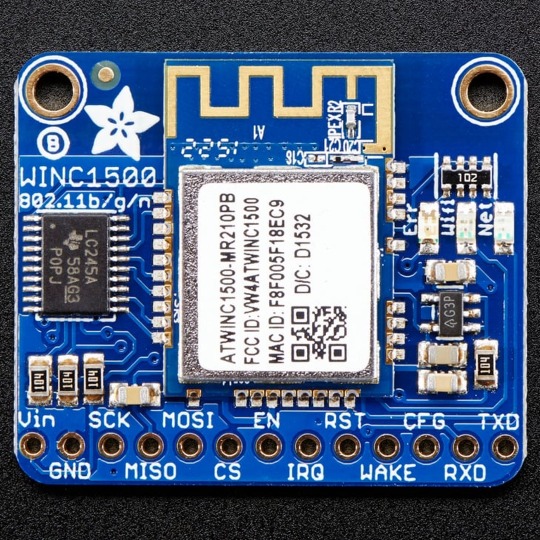
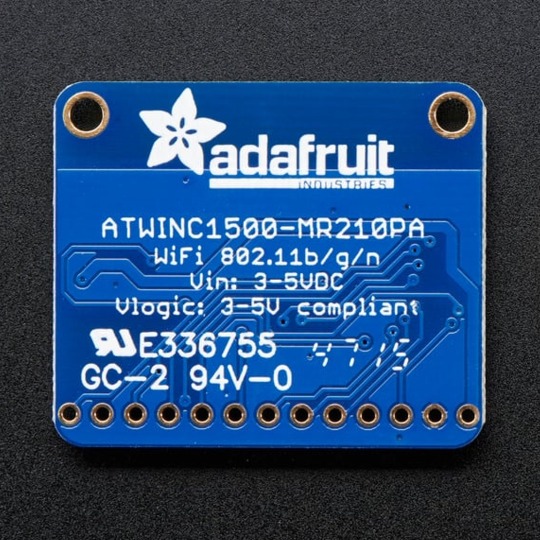
PCB of the Day! ATWINC1500 WiFi Breakout 🔌🌐🛠
Connect your development boards to the Internet with this fine WiFi module. This 802.11bgn-capable WiFi module is the best new thing for networking your devices, with SSL support and rock solid performance.
#adafruit#electronics#opensource#opensourcehardware#pcboftheday#pcb#wifi#arduino#internetofthings#iot#networking#tech#innovation#diy#maker#wireless
2 notes
·
View notes
Text
https://electronicsbuzz.in/the-booming-internet-of-things-iot-market-a-decade-of-explosive-growth/
#InternetofThings#smartcities#5G#revolutionizing industrial#automation#autonomous systems#AI#SmartTechnology#DigitalTransformation#EdgeComputing#Innovation#powerelectronics#powermanagement#powersemiconductor
0 notes
Text
What is the Scope of IoT Testing?
IoT testing involves evaluating the functionality, security, and performance of Internet of Things devices and systems. With the rapid growth of IoT, testing becomes critical to ensure seamless integration and optimal performance across various devices. This guide explores the scope of IoT testing, including challenges and best practices for ensuring quality in connected devices and smart systems.
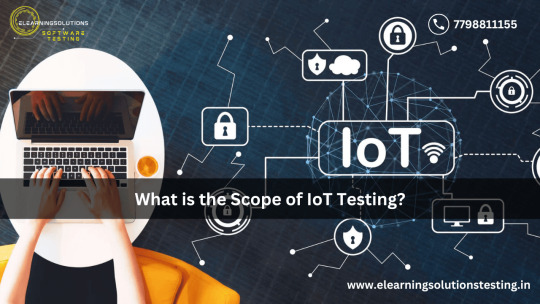
#IoTTesting#InternetOfThings#TechTesting#IoTDevices#QualityAssurance#TechTrends#IoTInnovation#SoftwareTesting#DeviceTesting#ConnectedSystems
0 notes
Text
Why Builders, Architects & Designers Are Choosing SmarDen’s Smart Touch Switches
As the demand for intelligent, aesthetic, and future-ready homes continues to grow across India, one product is quietly revolutionizing how professionals approach design and automation, smart touch switches.
Whether it’s a luxury apartment in Mumbai, a boutique hotel in Udaipur, a beachside villa in Goa, or a towering high-rise in Gurugram, smart touch switches are no longer viewed as high-tech novelties. They have become essential components that bridge aesthetics, functionality, and automation. These switches aren’t just about turning lights on and off, they represent a shift in how we interact with our spaces.
Here’s why India’s top builders, architects, and interior designers are choosing to integrate smart touch switches in nearly every modern project and why this trend is here to stay.
Sleek Design That Complements Modern Interiors
The bulky, outdated plastic switchboards of the past are giving way to modern, refined, glass-finish alternatives. SmarDen’s Smart touch switches blend seamlessly into today’s contemporary designs. With their flush mounted panels, ambient LED indicators, and premium textures, these switches add a touch of elegance to any room, residential or commercial.
Builders appreciate how these switches enhance the perceived value of a property. Designers love how they complement minimalist or luxury interiors. And homeowners? They’re impressed by how smooth and futuristic the experience feels with just one tap.
Custom Icon Options Eliminate Confusion
One of the most appreciated features of smart touch switches is the ability to personalize each button with custom icons. In a country where every room serves a different purpose and appliances vary from home to home, this level of customization eliminates confusion.
Instead of trial-and-error with unlabeled switches, homeowners get intuitive control over fans, lights, geysers, and more. This simple yet elegant feature also ensures a polished experience during project handovers, impressing clients and reducing the need for walkthroughs. For architects, it’s the assurance that form and function stay aligned.
Smarter Control, Smarter Selling Point
Today’s buyers are not just investing in square footage, they’re investing in convenience, technology, and future readiness. Smart touch switches, especially those equipped with Wi-Fi connectivity, app control, and voice assistant compatibility, make any project appear forward-thinking.
For builders, offering smart-ready units creates a unique selling point in a competitive market. For designers, it becomes a conversation starter, adding to the lifestyle pitch and elevating the overall story of the space.
Scene Creation Adds Wow Factor
Scenes like “Movie Time,” “Dinner Time,” or “Good Morning” are more than just automation gimmicks, they are experiences. With smart touch switches, multiple actions can be programmed to activate with a single tap: dim the lights, draw the curtains, adjust the AC, and set the mood.
Designers leverage this feature to emotionally connect homeowners with the idea of intelligent spaces. It shifts the value from individual features to the complete lifestyle, something that feels magical every time it’s used.
Retrofit-Friendly for All Kinds of Properties
Not every project has the luxury of starting from scratch. Many renovations and last-stage builds demand solutions that don’t require structural changes. That’s where smart touch switches shine.
Being retrofit-compatible, they can be installed into existing switchboards without rewiring or civil work. This makes them a go-to choice for developers working on legacy properties or designers updating older layouts. It’s an upgrade that offers flexibility and avoids disrupting timelines or budgets.
Built for Indian Lifestyles
Indian homes are unique, in structure, energy usage, and even user behavior. SmarDen’s smart touch switches are specifically built for these challenges, offering features like voltage surge protection, multi-user access, local language support, and durable hardware suited to our environmental conditions.
Builders appreciate the longevity. Designers value the confidence of recommending a system built for real-life conditions. And families benefit from intuitive technology that adapts to their habits, not the other way around.
Smarter Ecosystems, Seamless Expansion
Once touch switches are in place, expanding to a complete smart home ecosystem becomes effortless. Integrating door locks, sensors, curtain motors, and other IoT-enabled devices becomes a plug-and-play process.
Architects love that they can build intelligent spaces in phases. Developers benefit from future-proofing without high upfront costs. It turns homes into scalable systems, starting with the simplest interaction: a tap.
Final Word: A Smart Standard, Not a Luxury Add-On
What was once viewed as a luxury accessory has now become a standard expectation. Smart living isn’t a futuristic dream anymore it’s here, and it starts with smart touch switches.
Builders increase market value. Architects craft immersive environments. Interior designers deliver an experience, not just a look.
And for the homeowner? It’s comfort, control, and class — built right into the wall.
Experience the Difference Firsthand
Visit SmarDen at Smart Home Expo 2025 📍 Jio World Convention Centre, Mumbai 🗓️ May 8–10
Want to know more? Explore the best home automation company in delhi: www.smarden.in
follow us on instagram: https://www.instagram.com/smarden.in/
#SmartTouchSwitches #SmartSwitches #TouchSwitches #WiFiTouchSwitches #SmartHome #HomeAutomation #SmartHomeIndia #HomeAutomationIndia #SmarDen #SmartHomeExpo2025 Read more here:
#smarden#iot#technology#internetofthings#smart home automation#smart home#home automation#home automation in delhi#home automation system#best home automation company in delhi#touch switches#smart touch switches#wifi touch switches
0 notes
Text
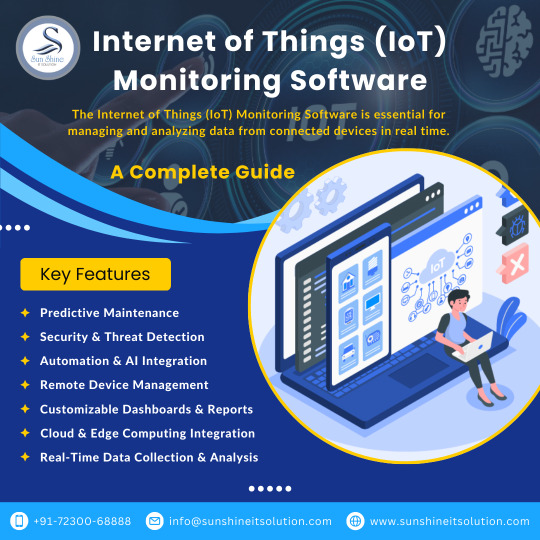
🌐 Unlock the Power of Connectivity with IoT Monitoring Software! 🚀
In a world where everything is getting smarter, businesses need IoT Monitoring Software to stay ahead. From real-time data tracking to predictive maintenance, IoT is revolutionizing industries by enhancing efficiency and reducing operational risks.
🔹 Key Benefits: ✔️ Real-Time Monitoring – Keep track of devices, assets, and operations 24/7. ✔️ Predictive Maintenance – Prevent failures before they happen. ✔️ Data-Driven Insights – Make smarter decisions with analytics. ✔️ Remote Accessibility – Control and monitor from anywhere. ✔️ Enhanced Security – Detect anomalies and threats instantly.
Please explore our YouTube channel for informative videos. Link :- https://www.youtube.com/@sunshineitsolutions
Contact Us :- https://wa.me/+91-7230068888
WhatsApp Channel ( Subscribe for more updates ) https://whatsapp.com/channel/0029Vb0QMGg0bIdggODhE22T
#IoT#InternetOfThings#SmartTechnology#IoTMonitoring#DigitalTransformation#BusinessGrowth#SunShineITSolution
0 notes